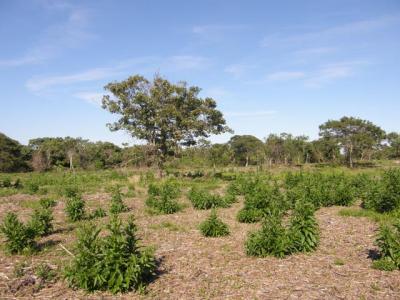Nature Notes: Montauk Grows Up

Montauk, in my eyes, is one of the richest places for natural history in the United States. It has grasslands, forests, savannas, freshwater wetlands, tidal wetlands, ponds both permanent and temporary, hills, kettleholes, glacial erratics, cranberry bogs, dunes, ocean beaches, sound beaches, all matter of marine and freshwater fishes, blue-spotted salamanders, and the only ocean coastal bluffs north of the Caribbean Islands. That venerable Long Islander Teddy Roosevelt traveled the world, and he also visited Montauk. He must have loved it. Walt Whitman loved it. I love it.
I am a latecomer. If I had come here 300 years earlier, I would have witnessed the Montauketts and their domesticated wolves. If I’d arrived 200 years earlier I would have seen Montauk as the second largest New York State prairie, replete with prairie flora and fauna and a few prairie chickens, not to mention the relatively new Montauk Lighthouse. One hundred years ago, Hither Woods was changing from a grassland to a deciduous oak-dominated forest, the Montauk Downs were knee-high with flowering sandplain gerardias, now federally endangered, the coastal bluffs were retreating landward at more than a foot per year, and the Walking Dunes were inching to the southeast with a baby one just starting up to the north.
Montauk is growing up in more ways than one. I’m particularly interested in how it is growing up biologically. Tropical fish species are beginning to inhabit the shallows around the glaciers anchored in the sea. Japanese shore crabs are the dominant invertebrates among the rocks around the Lighthouse. Humans are now the most common vertebrates.
Will Montauk eventually return to its island past? Will the grasslands grow up into a mishmash of native trees and foreign ones and disappear altogether? Will the sandplain gerardia, now hanging on by a thread, survive another 100 years? Will the deer, already small, become still smaller and ultimately dwarf Florida’s Key deer in size? Will coywolves (a.k.a. eastern gray wolves) replace their long-lost brethren as the largest four-legged predators? Will sea turtles lay their eggs on the ocean beach? Will Lake Montauk ever return to its historical status as the largest freshwater body on Long Island?
That is why I seized upon the opportunity to study one of the largest clearings undertaken in the Montauk moorlands in recent history, almost 20 acres in size. How will this clearing, just three months old, grow up? Will it return to moorland status? Will it stay low and add to Montauk’s dwindling inventory of maritime grasslands? Will it become another mishmash of Eurasian trees and endemic ones, not nearly as purely American as the longstanding Point Woods less than a quarter of a mile to the east?
I perused it on Friday in shorts and flip-flops. It was still low, less than a couple of feet tall, with about 20 white oaks, black oaks, and black cherries still standing but no more than 20 feet tall, typical for a moorland in Montauk. A few small patches of shade-loving New York ferns, for which the moorlands are famous, now exposed to the open sun, survived here and there. Shads or high-bush blueberries remained. Wine berries from Asia and olives from the steppes of Russia were everywhere, if only a foot and a half tall. Lots of other weedy species were popping up throughout. In some areas they were tussling with Tartarian honeysuckle for supremacy.
Yet, not to be discouraged, there were several native plants scattered over the premises, among them flowering joe-pye weeds, bonesets, late-flowering asters, hyssop-leaved thoroughworts, slender fragrant goldenrods, and fireweeds, which were among the tallest of the forbs at two feet in height or more. This last species is one of those pioneers that takes over cleared areas, as it did with another pioneer, Pennsylvania sedge, when the Grace Estate forest was partially destroyed by gypsy moths at the turn of the century.
Some native grasses, sedges, and reeds were also present, along with a few non-native ones. At this early stage of re-growth the plant cover was roughly 50 percent indigenous and 50 percent foreign. Interestingly, three of the most troubling invasives that are rampant elsewhere on the South Fork — garlic mustard, mugwort, and mile-a-minute weed — were not in attendance.
If Long Island’s Karen Blumer of Growing Wild had her way, the cleared land would be left alone to revegetate, hopefully back into a moorland vegetation type, so prominently seen at Shadmoor State Park to the west, and not found elsewhere on Long Island outside of Montauk. The worst possible solution for filling in the newly created open space would be to play God and plant 50 of these, 50 of those, etc., etc., etc. It’s been tried over and over again, sometimes out of guilt, other times as a judicial sentence, but it rarely works and five years later you are looking at a classical hodgepodge.
The most pleasurable result of my walkthrough: I did not encounter a single tick or mosquito. Could this be the new Montauk in transition?
Larry Penny can be reached via email at [email protected].
